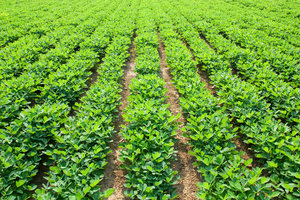Kendall Kirk, an agricultural engineer at Clemson University, recently shared the best digger speeds for peanut harvesting. He notes that in an effort to beat inclement weather, farmers often increase digger speeds. In turn, they hurt their yields and overall bottom line.
However, driving more slowly is not the answer, according to Kirk. Doing so can rip apart vines and increase costs over time.
“As you drive faster, your operating cost, primarily your labor cost, goes down because you are able to finish the job faster, but the cost of operating your digger more slowly is relatively small compared to your loss in yield when digging at higher speeds,” Kirk says.
To find the optimal speed for digging peanuts, Kirk recently conducted a study, testing various ground and conveyor speeds on Virginia-type peanuts. His experimentation took place at Clemson’s Edisto Research and Education Center. In the end, he concluded that the ideal ground speed for digging this specific type of peanuts is 2 to 2.5 miles per hour.
“Slower speeds should be used where digging losses are more likely, such as with larger pods, suboptimal maturity, heavier soils and drier soils,” Kirk added. “Driving too slowly will reduce your ability to dig on a timely basis, but driving too fast can cause higher yield losses.”
Finally, Kirk notes that when setting digging speeds, growers should take variables such as soil conditions into consideration.
